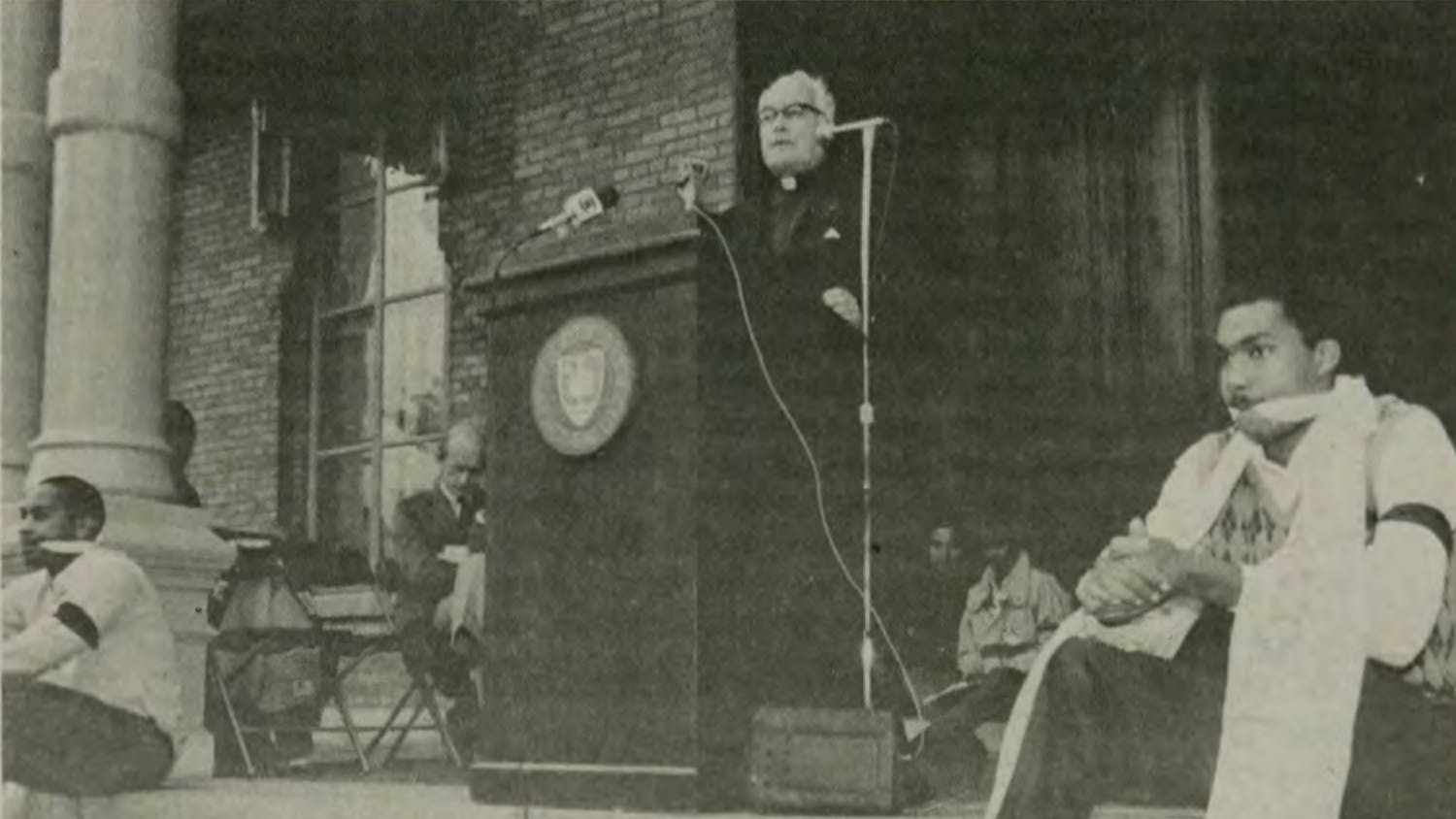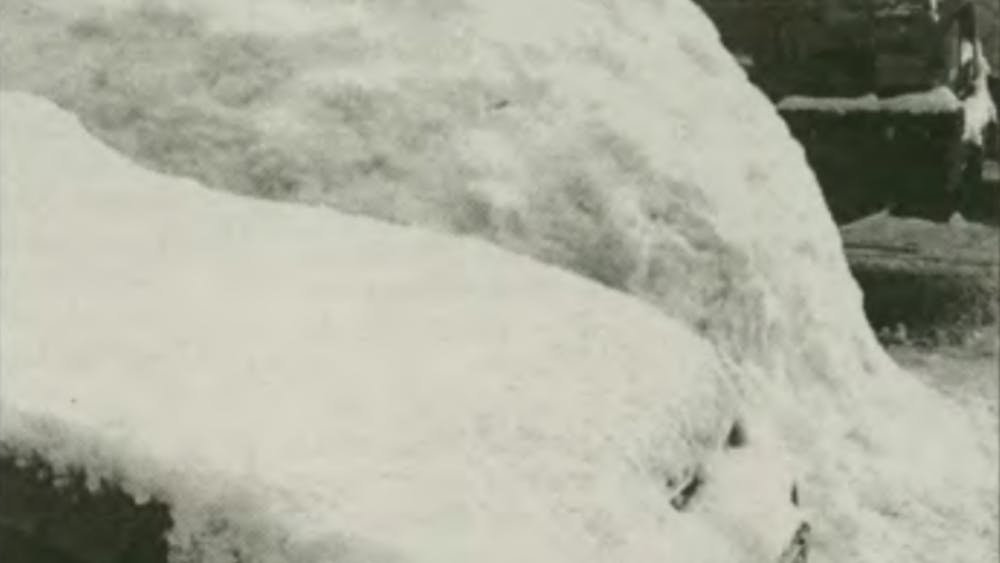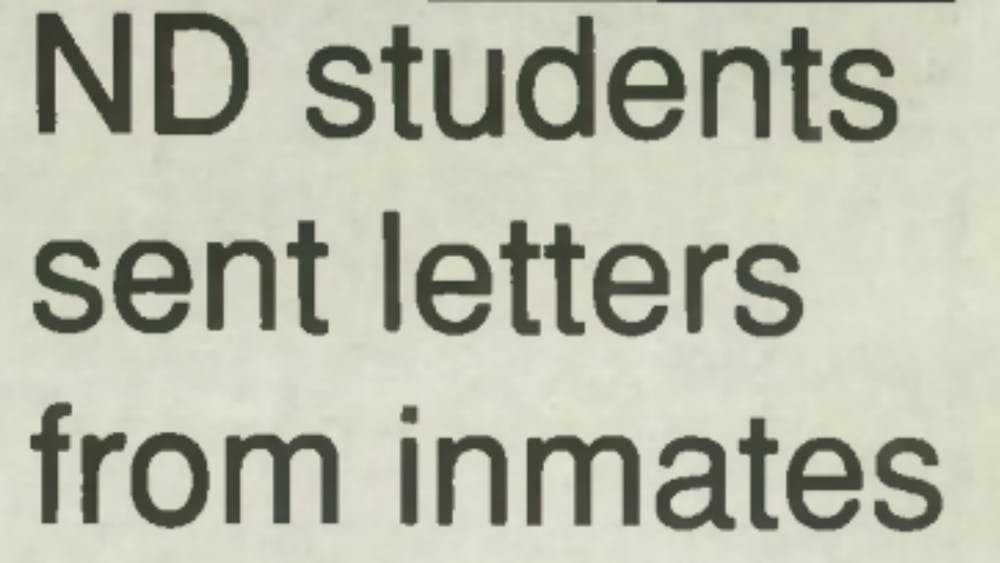
Senate to consider vote of no confidence in leadership of Fr. Malloy
April 2, 1992 | David Kinney | Researched by Chris Russo
On April 2, 1992, the faculty senate announced that they would consider a vote of no confidence in former University President Father Edward Malloy on April 7. The vote was set after months of debate regarding the faculty's role in the governance of the University, particularly in academic issues. The faculty senate based their decision in two primary points of contention: Fr. Malloy’s opposition to increasing faculty representatives on the Academic Council from 18 to 24, and the Board of Trustees’ failure to allow faculty to review the appointment of University Provost Timothy O’Meara before he assumed office. The Observer’s David Kinney covered the announcement of the vote, reporting reactions and opinions from both sides of the controversy.Professor David O'Connor and Professor Philip Quinn admitted that the motion had been proposed in the wake of unsuccessful deliberations with University representatives. In the final draft of their resolution, which forwarded the vote of no confidence, faculty senate members asserted that “The 1991-92 school year has revealed for all to see that the Administration of the University has a deep distrust of all meaningful participation by faculty in the governance of Notre Dame." More specifically, O’Connor noted that the vote of no confidence was not a personal gripe with Malloy — rather, it was about addressing “the policy direction that his administration is pursuing.” Despite O’Connor’s framing, other faculty members disagreed with the vote of no confidence and the logistics of the resolution.Frank Castellino, former dean of the College of Science, elaborated on the potentially harmful implications of the vote. The passing of such a resolution would be a “fairly destructive event,” he told Kinney. “There needs to be a longer history of problems between faculty and administration to take such a huge step."And Dean Eileen Kolman, formerly of the Freshman Year of Studies, corroborated much of Castellino’s sentiments, arguing that the vote would be a “premature” step. “Is this the only thing that can be done?” she asked.In response, supporters of the resolution were quick to point out that this vote came after years of debate concerning the structures of academic governance at the University. Malloy maintained that the University has been working with faculty members and addressing their concerns, concluding “I think we are; some may disagree.” He vocalized concerns about the optics of the vote, reasoning that it would “create a sense of crisis that could have other implications” in the public eye.Kinney noted that faculty’s general support of a vote of no confidence came as a result of an “increasingly adversarial relationship between the faculty and the administration.”Faculty senate postpones vote of no confidence, hopes for cooperation from administration
April 8, 1992 | Stephen Zavestoski | Researched by Sarah Kikel
At their meeting on April 7, the faculty senate elected to postpone their vote of no confidence in Father Edward Malloy for two weeks until they would reconvene on April 22. Professor David O’Connor, a member of the faculty senate, stated that the proposals made during the months of debate between administration and faculty were “insufficient,” but recognized the importance of administration engaging in conversation after three years of avoidance. O’Connor believed that the discussion between the faculty senate and Provost O’Meara gave rise to the potential of increased faculty representation, despite administrative reluctance. In the interim, the time would allow for considerable progress in determining favorable results. O’Connor said that he believed the majority of the faculty supported the vote of no confidence and disagreed with Malloy’s article in the South Bend Tribune, in which the President asserted that only a small number of faculty were leading the movement. The next day, the Observer reported that, according to Professor Paul Conway, the chair of the faculty senate, both Malloy and O’Meara were communicating their willingness to cooperate with faculty. O’Meara mentioned the potential of ad hoc committees within the Academic Council in order to increase the faculty’s role in academic decision making. In a letter to the faculty senate members, Malloy proposed the creation of a third body of the Academic Council, of which about 32/50 would be members of the faculty.Despite these new developments, faculty members remained vigilant. Conway asserted that the vote of no confidence was still not off the table. “It depends on whether we get something specific,” he concluded.Faculty senate withdraws vote of no confidence in Fr. Malloy
April 23, 1992 | Stephen Zavestoski | Researched by Uyen Le
After a two-week delay, on April 22, 1992, the faculty senate opted to withdraw the motion for a vote of no confidence in University President Fr. Malloy. A nearly unanimous vote, the decision came after Malloy promised increased administrative openness and a restructuring of the Academic Council. His proposal, however, did not include a shift in proportionality.













